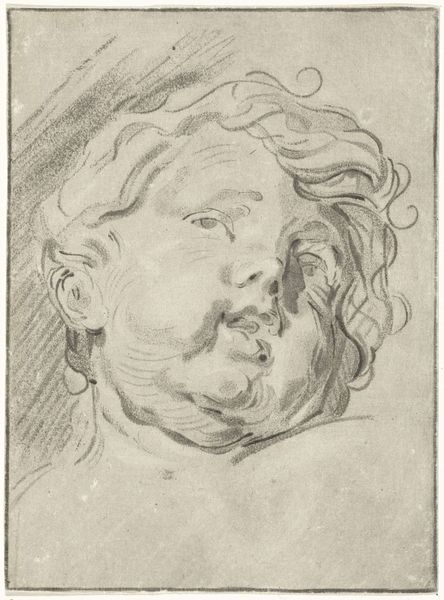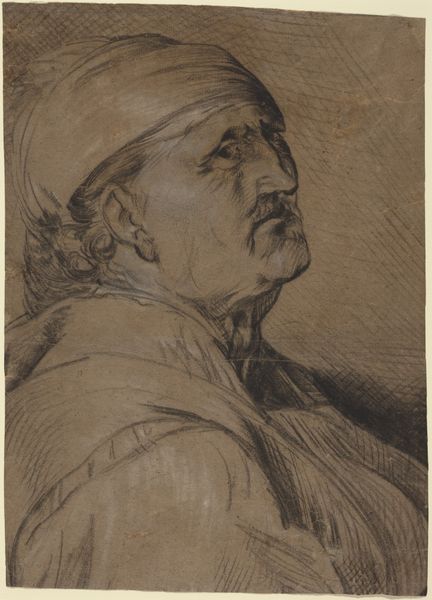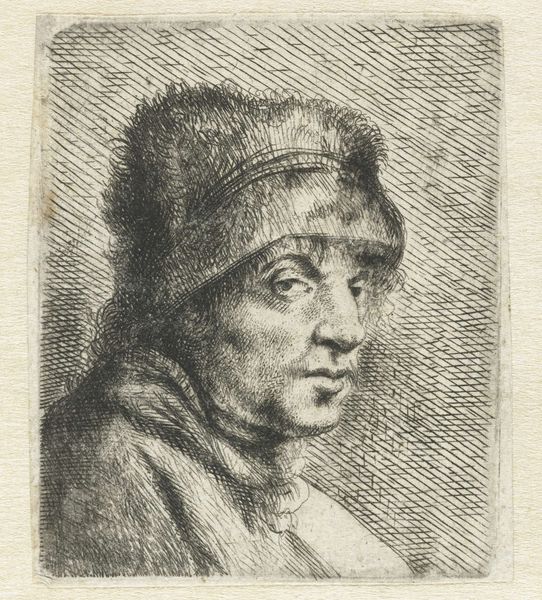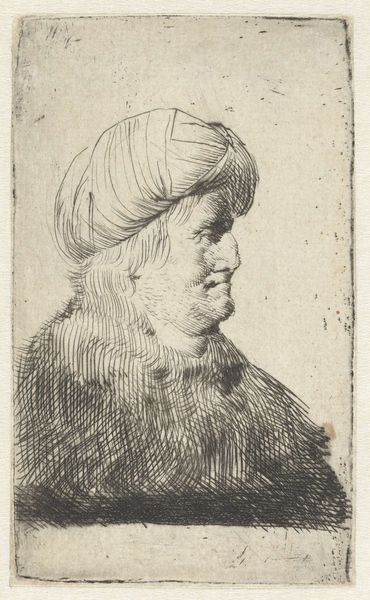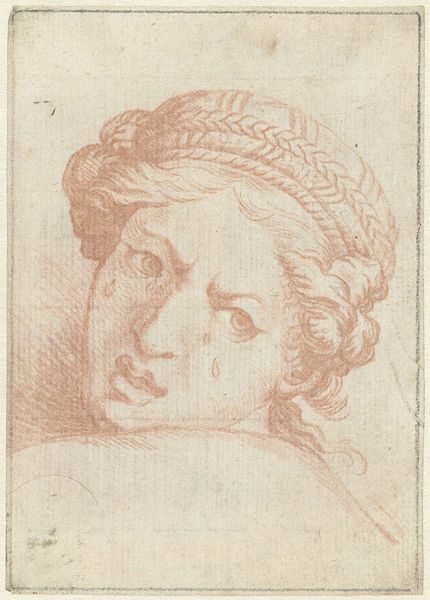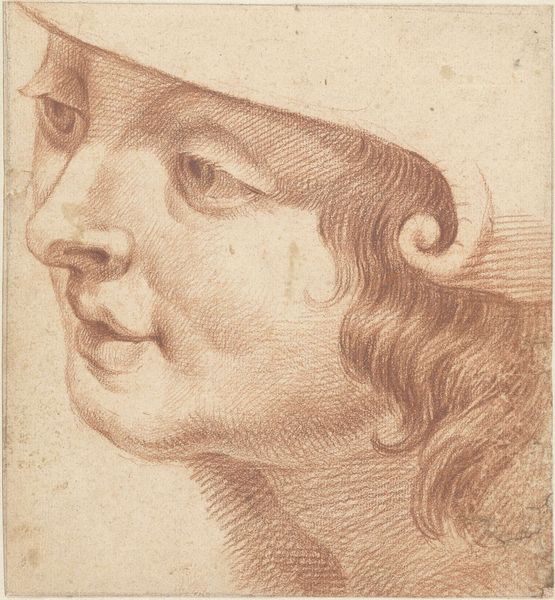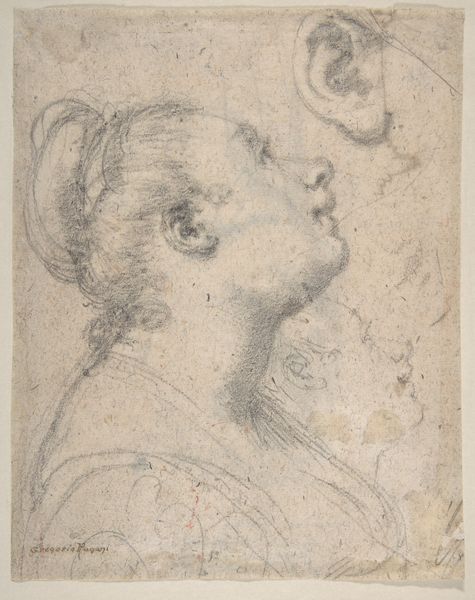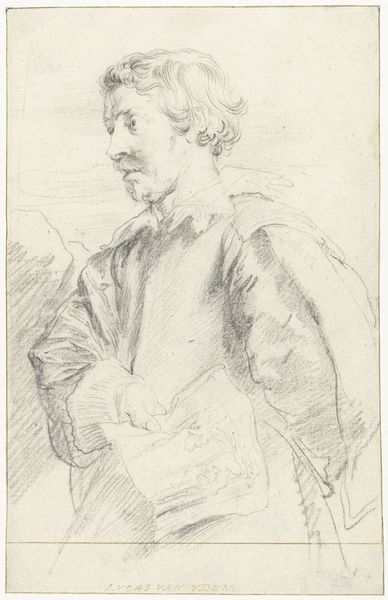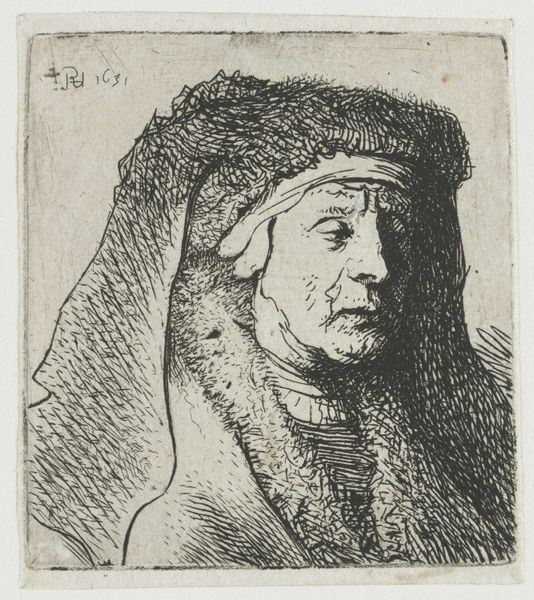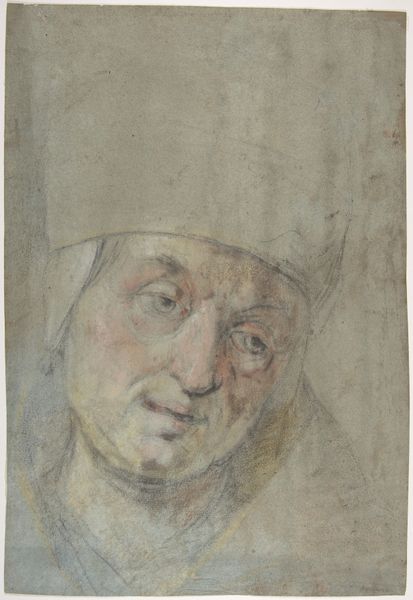
drawing, charcoal
#
drawing
#
baroque
#
charcoal drawing
#
charcoal
#
history-painting
#
realism
Dimensions: height 271 mm, width 219 mm
Copyright: Rijks Museum: Open Domain
Jacques Jordaens made this drawing of a man's head, turned to the right, using black chalk and heightened with white. Jordaens was Flemish, working in the 17th century, a period when the visual arts were heavily influenced by religious, political, and economic factors. The Catholic Church was a major patron of the arts, and the Dutch Republic was a major economic power. Artists like Jordaens often navigated this complex world by creating art for both public and private consumption. Drawings like this were often preparatory studies. They would have been created in the studio and informed a larger finished piece, such as a painting. This drawing suggests the important role played by the artist’s studio in the period, and the academic institutions that underpinned this. Art historians use a range of resources – like letters between artists and patrons or financial records from art dealers – to place artworks such as this within their original social and institutional context. The meaning of art is contingent on its history.
Comments
No comments
Be the first to comment and join the conversation on the ultimate creative platform.
